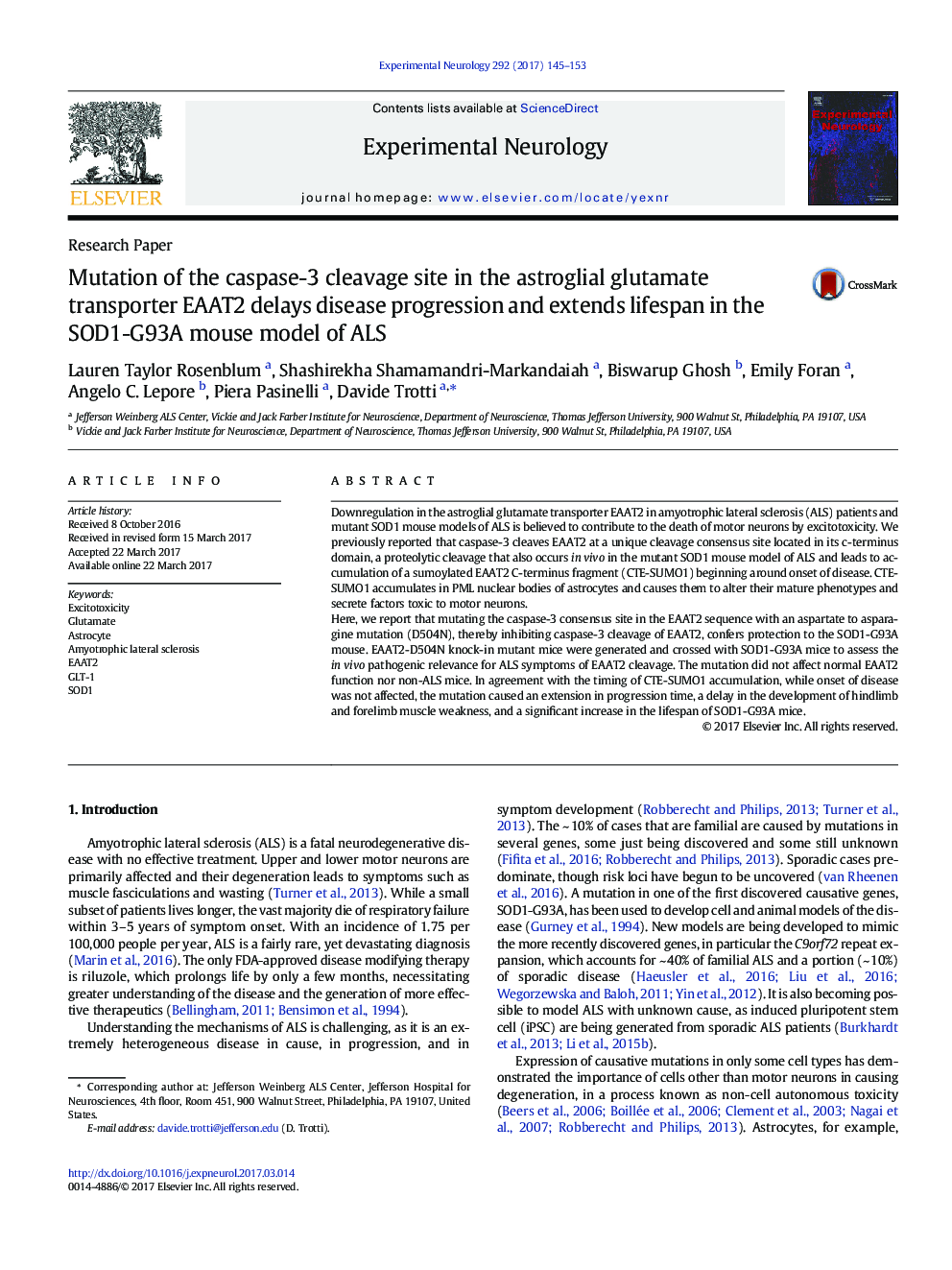| Article ID | Journal | Published Year | Pages | File Type |
|---|---|---|---|---|
| 5629157 | Experimental Neurology | 2017 | 9 Pages |
â¢A novel bigenic SOD1-G93A mouse model carrying an EAAT2-D504N mutation was generated.â¢The mutation prevents caspase-3 cleavage of EAAT2 and delays ALS progression in SOD1-G93A mice.â¢SOD1-G93A mice with the mutation have delayed loss of forelimb and hindlimb strength.â¢EAAT2-D504N does not affect the onset of disease but extends survival in SOD1-G93A mice.
Downregulation in the astroglial glutamate transporter EAAT2 in amyotrophic lateral sclerosis (ALS) patients and mutant SOD1 mouse models of ALS is believed to contribute to the death of motor neurons by excitotoxicity. We previously reported that caspase-3 cleaves EAAT2 at a unique cleavage consensus site located in its c-terminus domain, a proteolytic cleavage that also occurs in vivo in the mutant SOD1 mouse model of ALS and leads to accumulation of a sumoylated EAAT2 C-terminus fragment (CTE-SUMO1) beginning around onset of disease. CTE-SUMO1 accumulates in PML nuclear bodies of astrocytes and causes them to alter their mature phenotypes and secrete factors toxic to motor neurons.Here, we report that mutating the caspase-3 consensus site in the EAAT2 sequence with an aspartate to asparagine mutation (D504N), thereby inhibiting caspase-3 cleavage of EAAT2, confers protection to the SOD1-G93A mouse. EAAT2-D504N knock-in mutant mice were generated and crossed with SOD1-G93A mice to assess the in vivo pathogenic relevance for ALS symptoms of EAAT2 cleavage. The mutation did not affect normal EAAT2 function nor non-ALS mice. In agreement with the timing of CTE-SUMO1 accumulation, while onset of disease was not affected, the mutation caused an extension in progression time, a delay in the development of hindlimb and forelimb muscle weakness, and a significant increase in the lifespan of SOD1-G93A mice.
